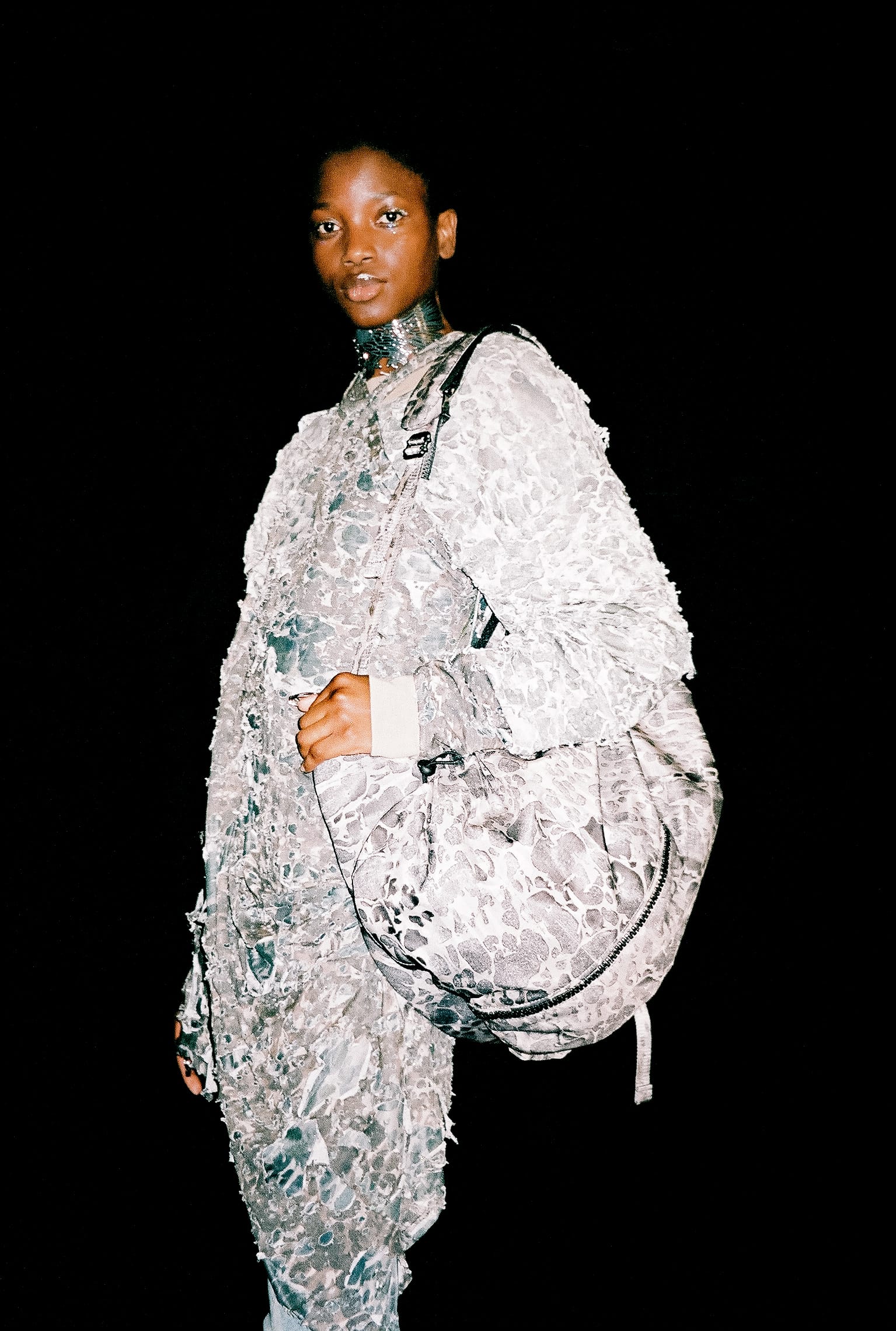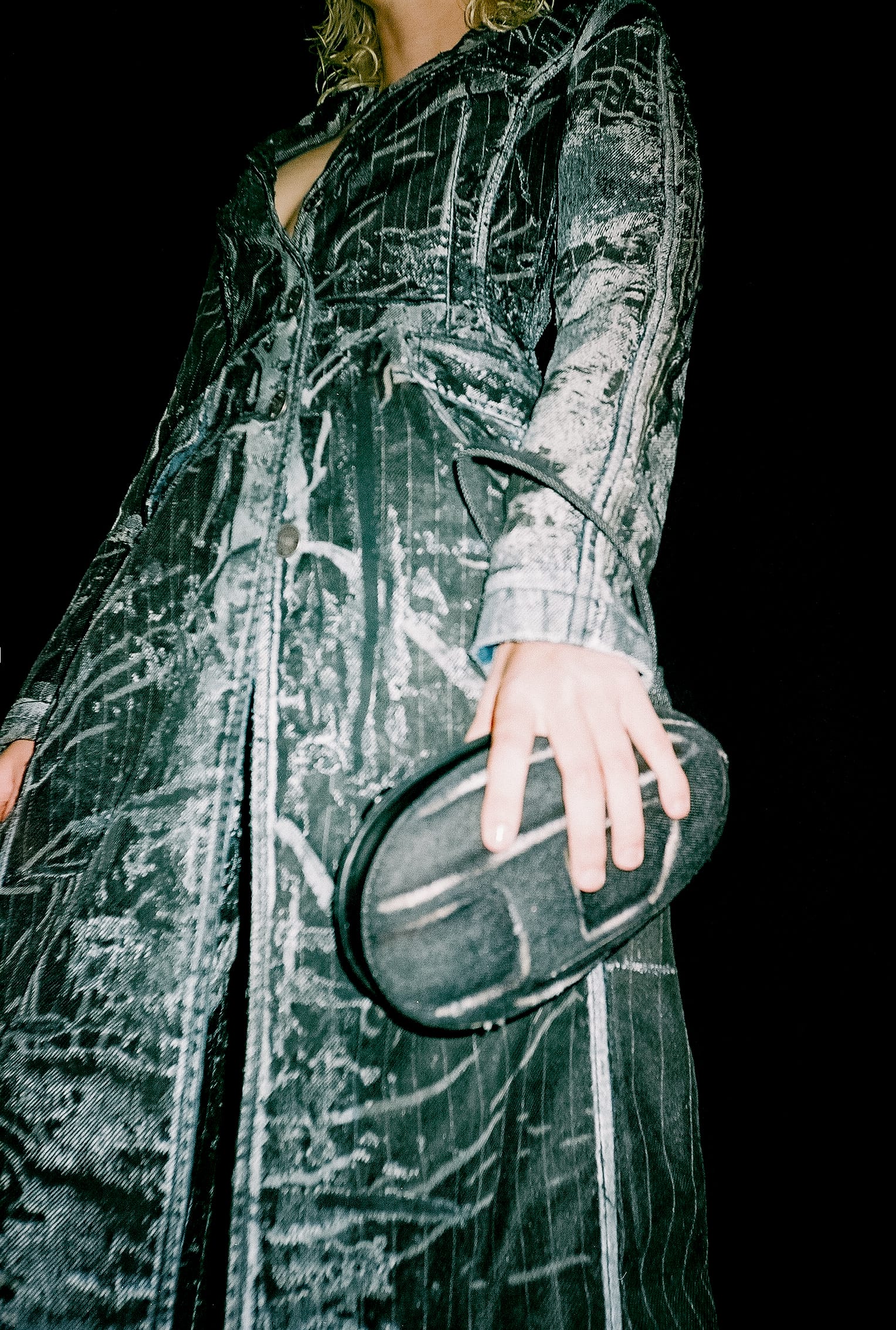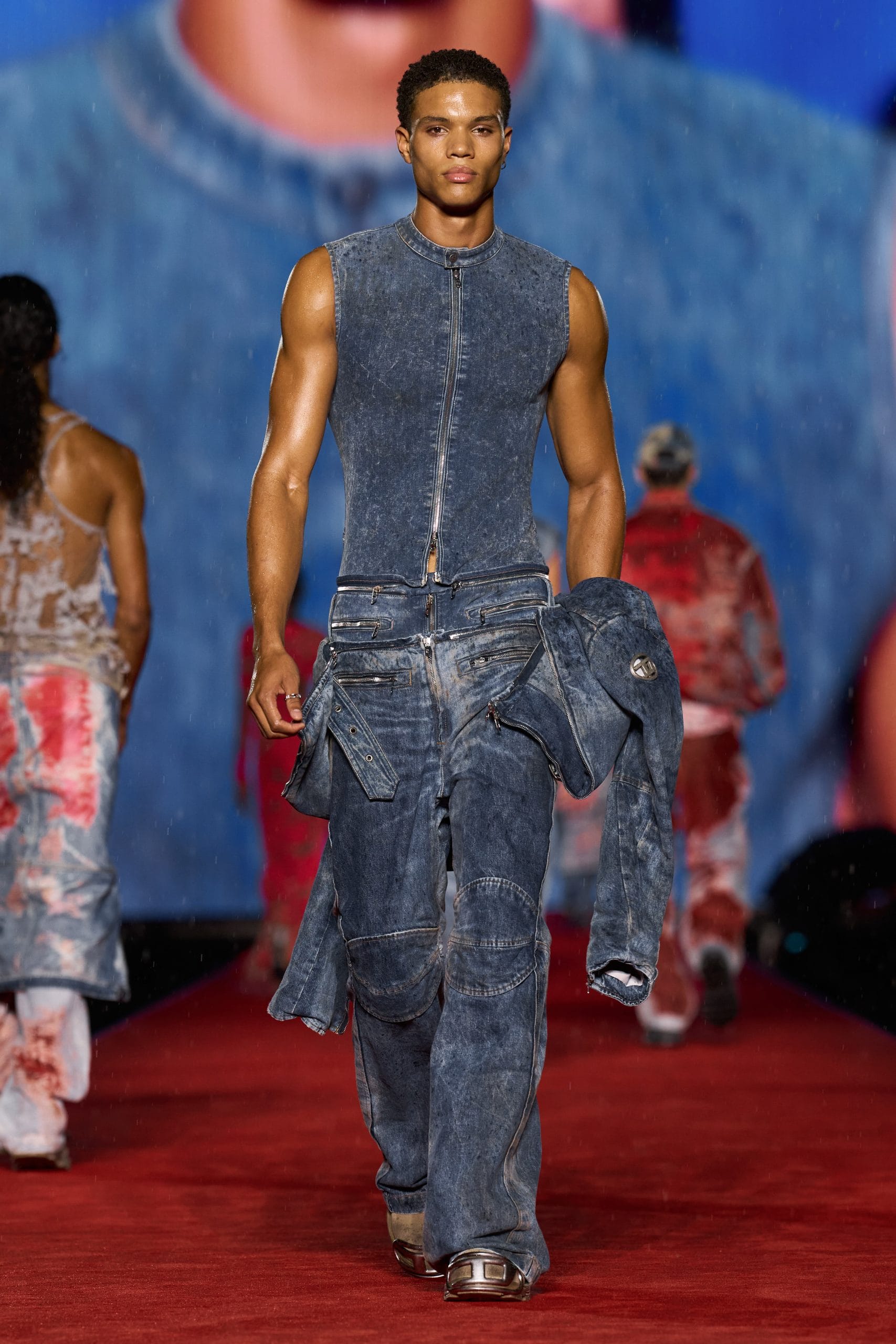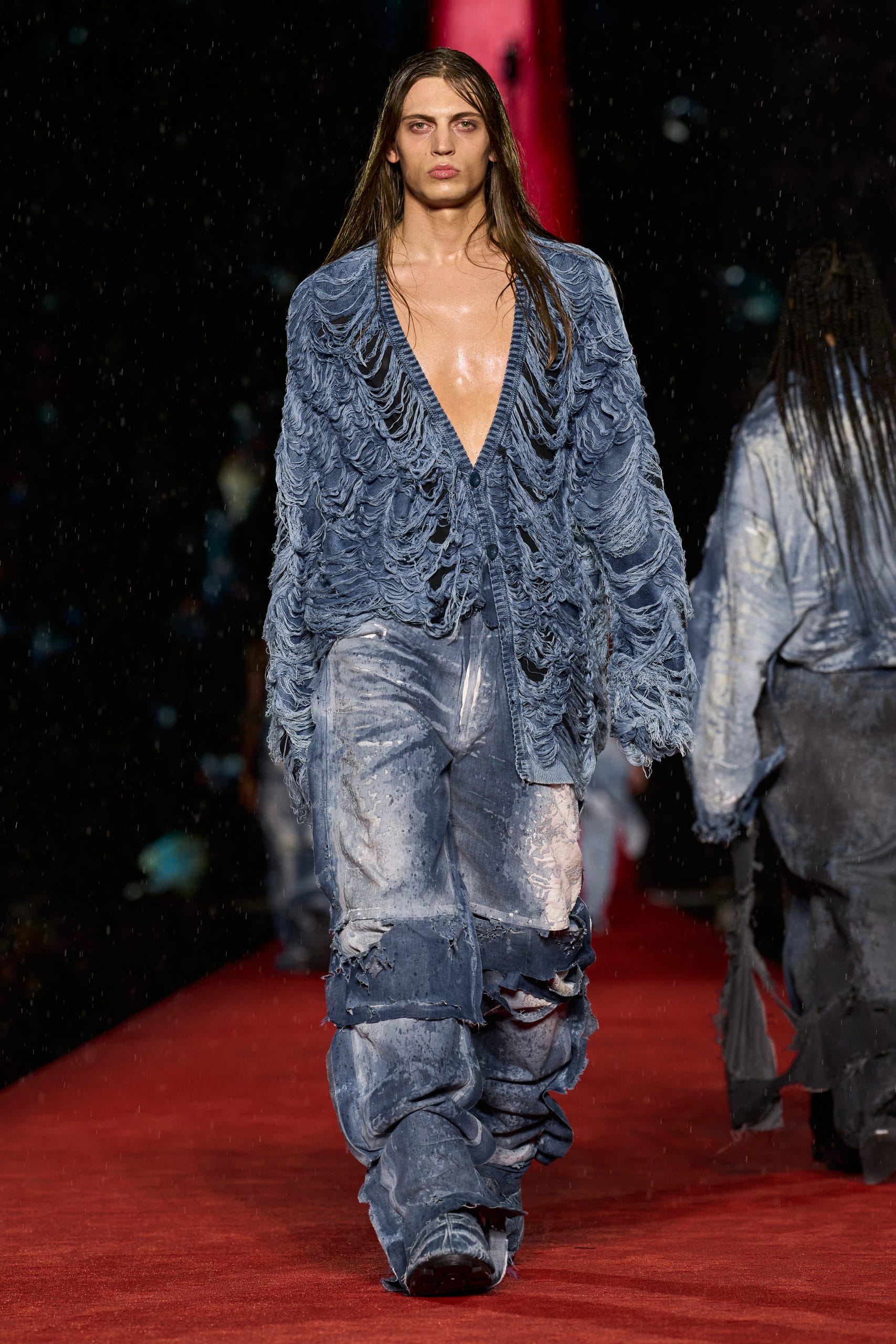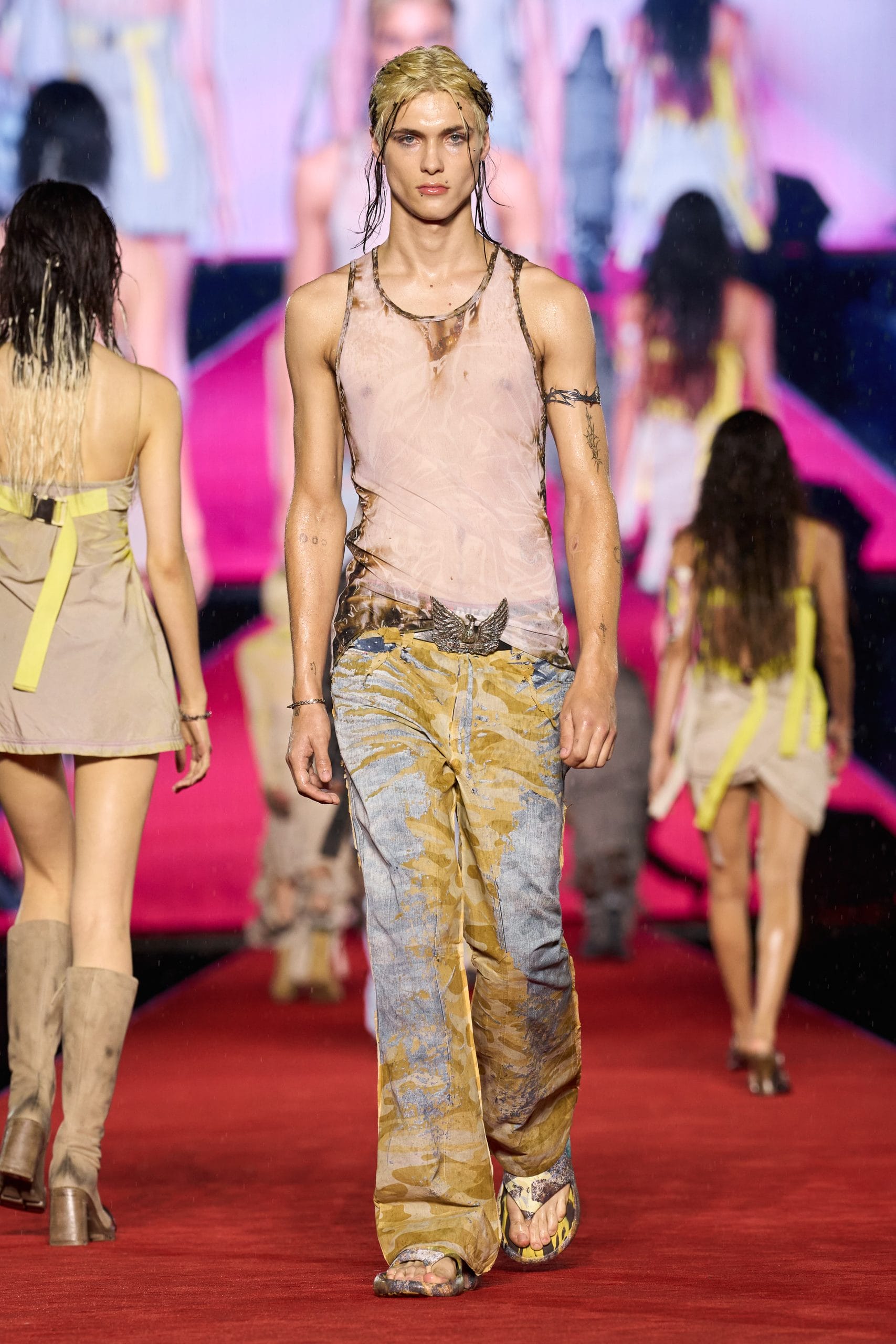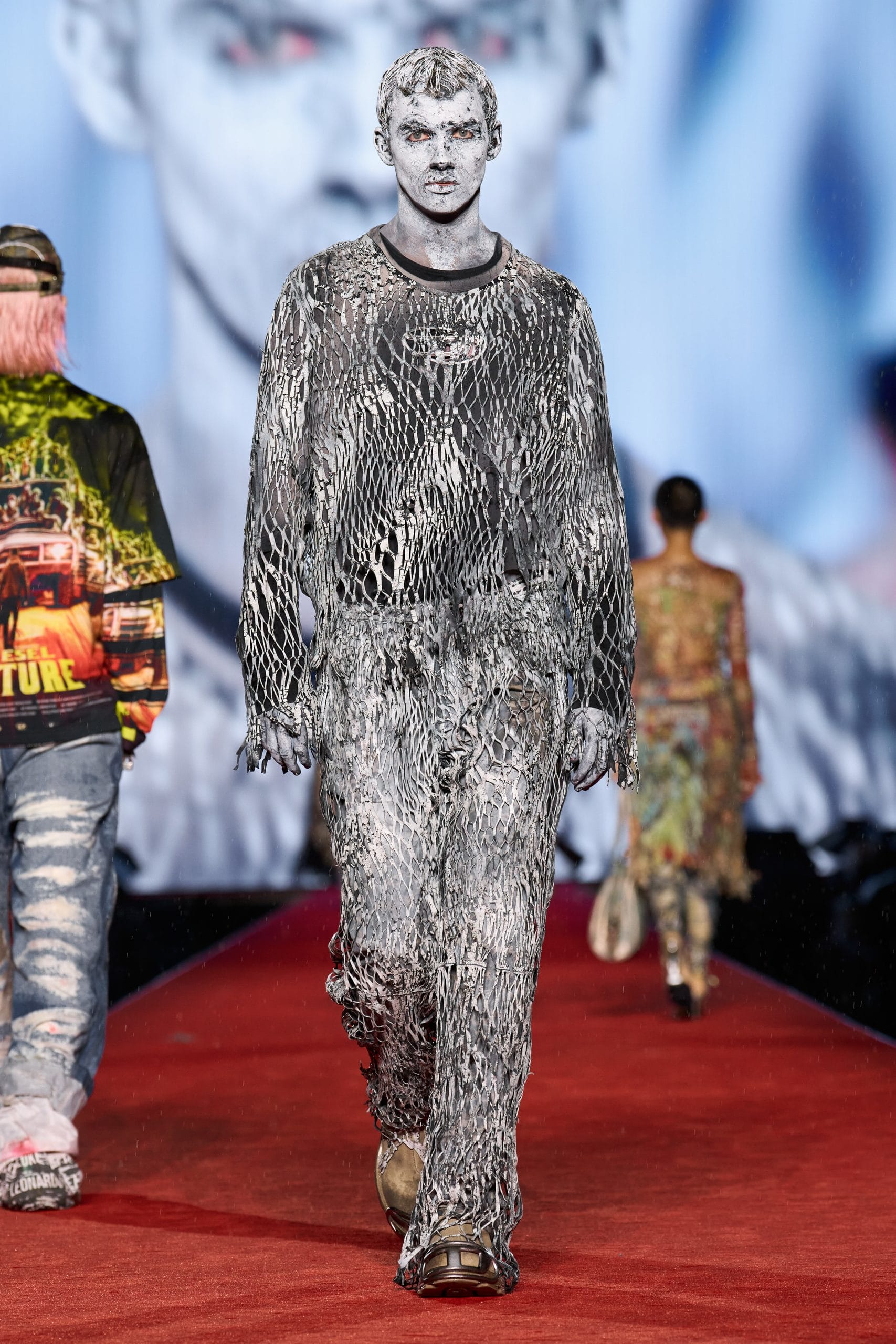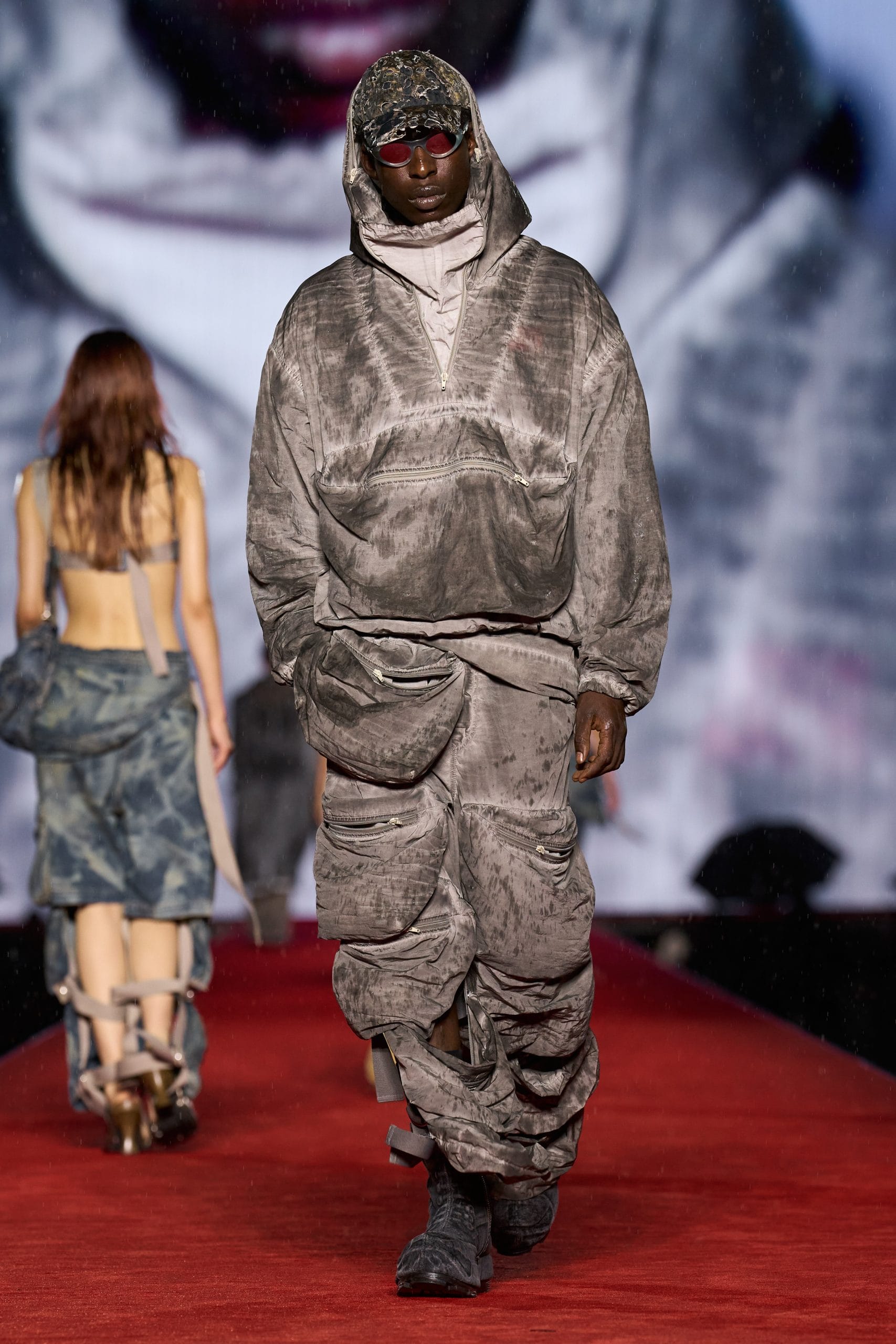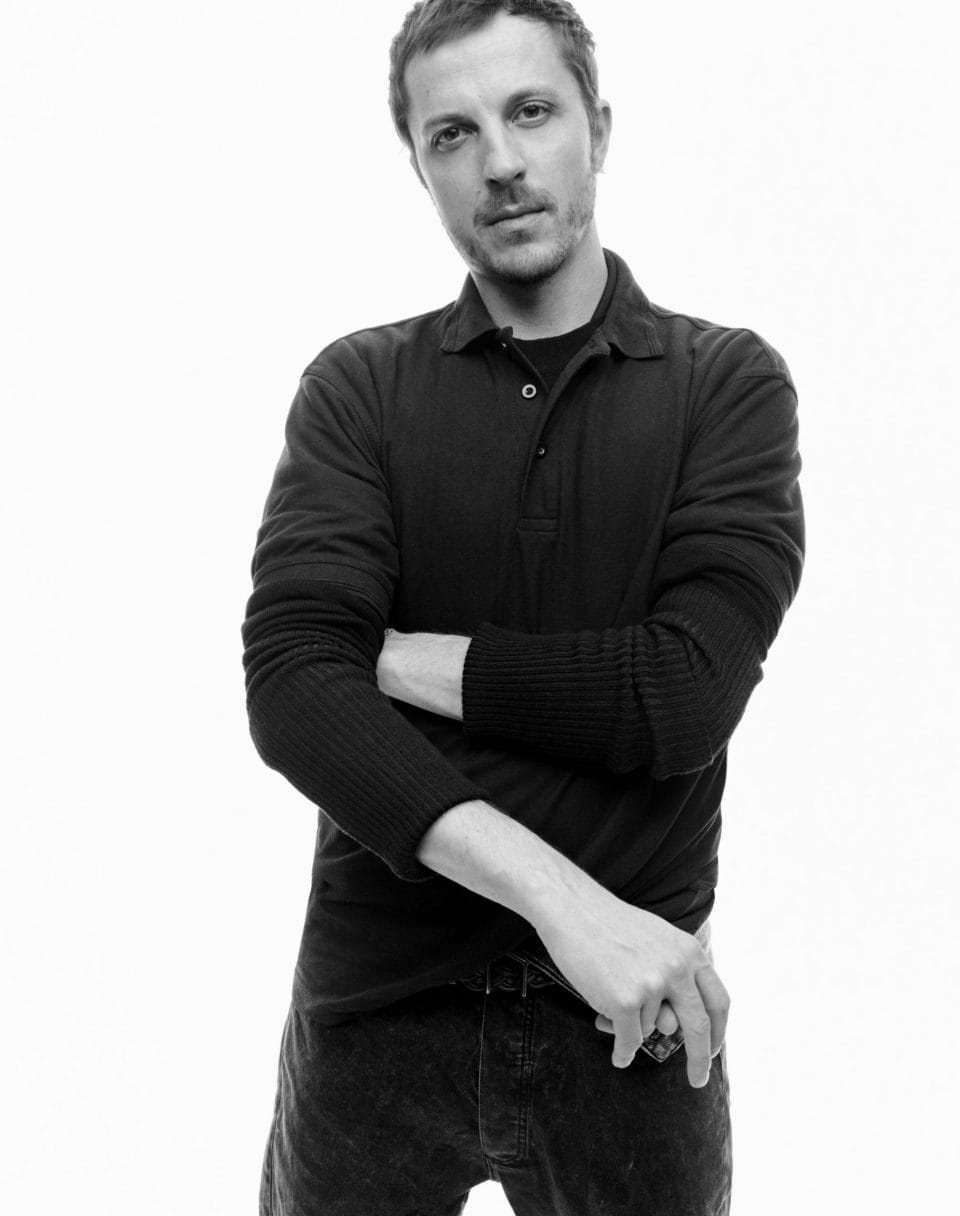
Creative director Glenn Martens may have risen Diesel from the ashes, but its the way the Belgian designer wields denim to his power that makes it such an exhilarating watch. Men’s Folio chats with him on just how he does it.
Glenn Martens is a natural-born provocateur. Just look at his past: In 2013, the Belgian designer took on the role of creative director for the independent French label Y/Project, where he geared the brand to win the ANDAM Grand Prize four years later with its witty, gender-cross-pollinating designs. Since then, it is not hard to trace the influence Y/Project has over the entire industry: Several seasons, with its ballooning inclination for deconstructed denim and absurd tailoring propositions, has indicated no less the pressure Martens has exerted for certain inventiveness. It might have been the trend, but what almost flew under the radar was the way he made them a trend. And it is the results of his designs, which always appear as niche experiments — each toying with the possibilities of its form, where deconstructed layers are added or subtracted on ordinary items such as sweatshirts, T-shirts, and denim to make anew. The latter would eventually pave the way for a new era in contemporary fashion, in which Martens acts as its most effective contributor.
Despite receiving multiple offers, Martens eventually accepted OTB Diesel’s opportunity to lead as its creative director in 2020. Arriving at a time where most would deem unfavourable — with the COVID-19 pandemic putting fashion in a seismic, regenerative period of change — Martens debuted when denim’s relevance could not have been more pertinent; thanks to a shakeup by Gen Zs advocating for the return of early 2000s, or Y2K trends. The lead-up to his first show had the entire industry frothing at the mouth — Martens introduced denim by way of certain sex appeal that felt intellectual and, above all, modern. Then came a slew of It bags (the 1DR) and even It skirts (the D-logo velcro-strapped mini-skirts), all priced within the affordable luxury range, secured Martens’ future. Showcasing a revamped Diesel seemingly rising from the ashes to a notable degree of success, he also joins a new vanguard of designers taking siege in the next generation for fashion.
Each season, peculiar attention is paid to reinvention, As an industry which collectively hunts for penchants of the new, there’s always room to talk about a new designer imbuing their take on a heritage brand, or when a heritage brand takes a leap of faith and tries out something different. What stands out, however, is that Martens offered audiences both. “Diesel has always been an alternative to luxury in the market and it’s funny because there is no way to define us. It’s a unique position in the industry,” shares Martens. Today, Diesel is one of, if not the most, invigorating brands in fashion. Following the journeys of past examples — from Marc Jacobs’ time at Louis Vuitton to Daniel Lee’s reinvention of Bottega Veneta — Diesel, which once loomed as an exciting offering in the 1990s, has returned to the pop-culture sphere, and it’s definitely a moment not to miss.In an exclusive interview with Men’s Folio, Glenn Martens offers us a glimpse into denim’s possibilities.
Denim. It is such a simple material and we see it so commonly and it’s very much a part of our lives. Do you think denim is limitless?
There are always so many new ways to play with denim.
How then do you wield denim to become such an impactful tool when making fashion?
For Spring/Summer ’24, we have bonded denim jeans with muslin so they are totally encased, or bonded denim with a jersey that’s then distressed and torn. This season, all of our denim devoré pieces are printed on the inside to show through the sheer layer, either the Diesel red logo, pin-stripes or dreamy floral prints. We have also made inside-out indigo jacquard knits that look like shredded denim, with laddered threads. We also play with how we use denim for utility, like denim boiler suits that can be zipped apart, worn as separates or mixed and matched, and then we’ve sewn together denim belt bags to make a top or put pockets on the chest of a denim bandeau top.
Is there anything denim can’t do, or you wish it could?
Diesel makes denim for everybody that is disruptive and experimental. We experiment with denim itself, and then we play with trompe l’oeil, like the denim devoré that we have developed at Diesel. It looks like it is dishevelled or destroyed denim, but, actually, it’s embroidered onto a sheer base. I love how (the brand) gives us the freedom to experiment, just like the people who wear Diesel can experiment with what we design.
What was the first thing you sought to change at Diesel?
At Diesel, I didn’t change the aesthetic because is completely based on the brand’s DNA. I was just reconnecting and celebrating it. At the beginning it was easy for me to understand what the brand stands for so I simply embodied it, put a lot of accent on it and made sure that everybody could understand what Diesel is and what Diesel stands for.
Why did you decide to bring back the “D” logo?
To me, the D logo is so powerful. An emblematic representation of what it means to be free, sexy and included. The ‘D’ in itself reminds us of strength and possibilities and it is the embodiment of Diesel’s DNA. It’s great to see people responding to it so well. I love seeing people wearing it on the street.
How does your experience at Diesel differ from your time with Y/Project?
The creative focus for the two brands Diesel and Y Project is very different. it’s easy for me to work for both because they have different ways of expressing themselves: Diesel is really more on the surface, on the experimentation of materials, colours, and graphics but trying to maintain shapes as simple as possible to let people be able to wear the collection easily, while for Y/Project we have more simple fabrics but very experimental in the way we construct the garment.
What do you think is denim’s role in fashion today?
Diesel is a democratic brand, and denim is the clothing of the people. The know-how of denim at Diesel is unbelievable. We can create the craziest things. Diesel is fun, and sexy, and it pushes everything to the extreme, including what we can do with denim.
There’s also a sense of community-driven initiatives. For instance, the mega-fashion show for SS24 where tickets were even given out to the public and students. What was the intention here?
This is the Diesel democracy, to open fashion up to the public. This Spring/Summer ’24, we held a free 8-hour rave with NTS for 7,000 people, with a fashion show in the middle. This time, the tickets went in minutes. The set was a giant outdoor screen, and at the end of the show, we announced the screen would turn into a film festival, playing films all weekend, for free, open to everybody.
What are some things we can expect to see of Diesel in the coming years?
I think the biggest challenge ahead of me is being aware of the responsibility we have speaking to multitudes, being engaged in society, and making sure you can accelerate the change you want to see. One thing I wish is that we can keep on growing and doing what we do and be more and more directional.
Once you’re done with this story, click here to catch up with our November 2023 issue.

